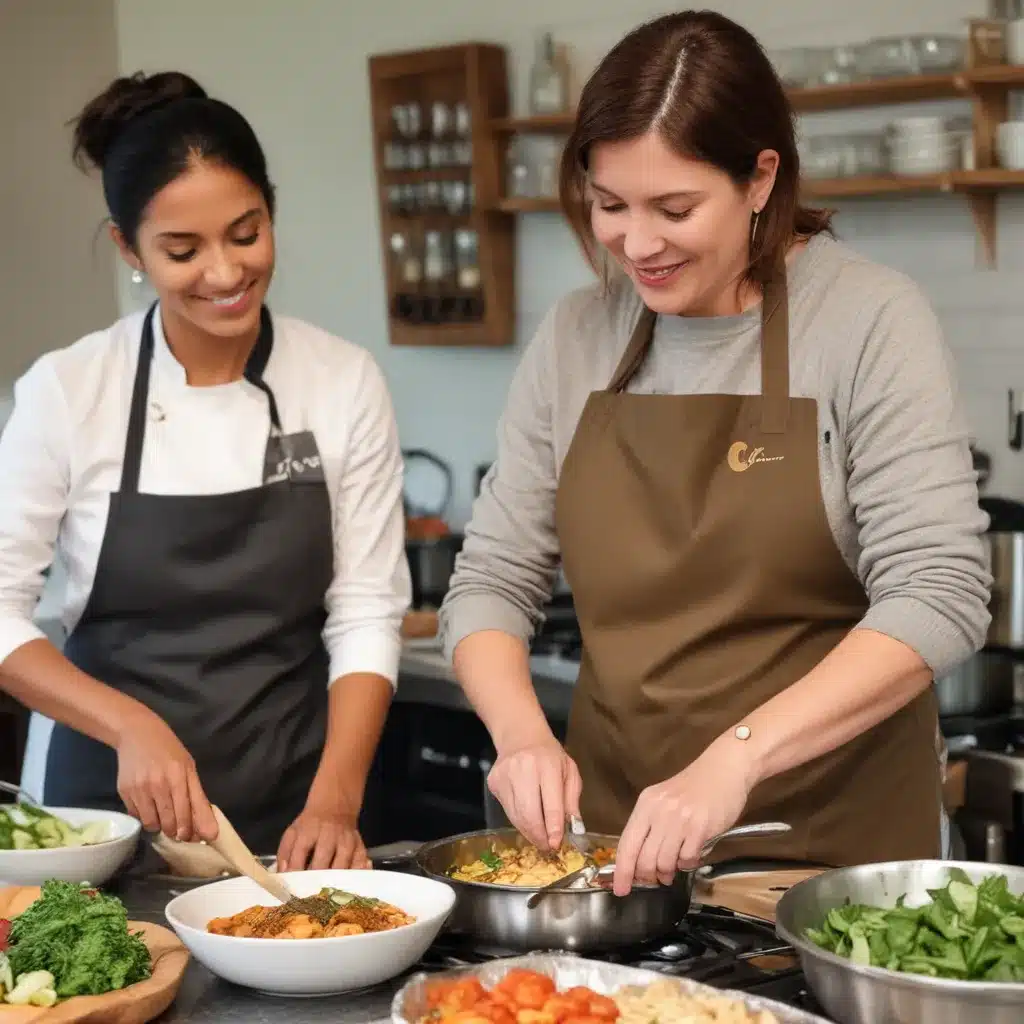
Discovering the Flavors of the Philippines
As I step into the bustling market in the heart of Manila, the sights and sounds immediately captivate me. The vibrant stalls overflow with an abundance of tropical fruits, fragrant spices, and freshly caught seafood – a feast for the senses that ignites my culinary curiosity. This is where I will begin my journey of connecting with the local community through the shared experience of cooking.
My guide for the day is Mila, a spirited local who has graciously invited me into her home to teach me the secrets of authentic Filipino cuisine. As we weave through the crowded aisles, she enthusiastically points out the unique ingredients that will feature in our lesson, explaining their cultural significance and traditional uses. From the plump, juicy mangoes to the vibrant bunches of cilantro, each item seems to hold a story waiting to be told.
“Cooking is not just about the end result,” Mila shares, her eyes sparkling with excitement. “It’s about the connections we make, the traditions we honor, and the memories we create along the way.” I nod in agreement, already feeling a deeper appreciation for the culinary traditions of this vibrant country.
Hands-on Exploration of Filipino Flavors
With Mila as my guide, I step into her cozy kitchen, eager to learn the art of Filipino home cooking. As she begins to expertly chop and measure the ingredients, I watch intently, my senses heightened by the tantalizing aromas that fill the air.
“We start with the base of our dish – the holy trinity of Filipino cooking,” Mila explains, deftly combining garlic, onions, and tomatoes in a sizzling pan. “These three ingredients are the foundation for many of our beloved recipes, infusing each dish with a depth of flavor that is truly unique to our cuisine.”
As we work side by side, Mila shares stories about the origins of the dishes we’re preparing, weaving in tales of her family’s cherished traditions and the role that food plays in Filipino culture. I hang on her every word, captivated by the rich tapestry of history and heritage that is woven into each ingredient and technique.
With Mila’s guidance, I carefully assemble the various components of our meal – from the tender, slow-cooked beef adobo to the vibrant vegetable stir-fry and the fluffy, fragrant jasmine rice. Each step is a lesson in precision and patience, but also in the art of finding joy in the process.
Savoring the Flavors of Community
As the final dish is plated, the aromas waft through the air, tantalizing my senses and whetting my appetite. But before I can dig in, Mila insists that we gather around the table and share the meal together, just as her family has done for generations.
“Food is not just sustenance; it’s a way to bring people together,” she says, her voice warm and inviting. “In the Philippines, we believe that the true essence of a dish can only be fully appreciated when shared with loved ones.”
And so, we sit and savor each bite, our conversation flowing as naturally as the flavors on our tongues. Mila regales me with stories of her childhood, of family gatherings where the kitchen was the heart of the home, and of the celebratory feasts that marked special occasions. I listen intently, captivated by the way she weaves the threads of her personal history into the fabric of Filipino culinary tradition.
As the meal comes to a close, I find myself feeling not just satisfied, but profoundly connected to the community that has so generously welcomed me into their lives. The flavors of the Philippines have become more than just a sensory experience; they’ve become a gateway to understanding the rich tapestry of this amazing country and its people.
Lasting Impressions and Culinary Connections
As I bid farewell to Mila and her family, I can’t help but feel a sense of gratitude and wonder. The cooking class has been more than just a lesson in technique; it’s been a journey of cultural immersion, a chance to forge meaningful connections with the local community, and a deep dive into the heart and soul of Filipino cuisine.
The memories of the vibrant market, the laughter-filled kitchen, and the nourishing meal shared around the table will continue to linger long after I’ve returned home. And I know that whenever I recreate the dishes we’ve learned, I will be transported back to this moment, to the warmth and hospitality of the Filipino people, and to the profound power of food to bridge cultures and forge lasting connections.
Visit philippinegetaway.com to plan your own culinary adventure in the Philippines!
Exploring More Culinary Treasures
My experience with Mila has sparked a deep fascination with the diverse culinary landscape of the Philippines, and I’m eager to continue my exploration of this captivating country. From the sun-drenched beaches of Boracay to the lush rice terraces of Banaue, I know that each region holds its own unique culinary traditions and stories waiting to be discovered.
Perhaps I’ll venture to the bustling city of Cebu, where I can immerse myself in the vibrant street food scene, savoring the smoky, flavor-packed barbecue skewers and the tangy, refreshing halo-halo desserts. Or maybe I’ll make my way to the remote Batanes Islands, where I can learn the secrets of traditional fishing and foraging techniques that have sustained the local communities for generations.
Wherever my culinary journey in the Philippines takes me, I’m certain that I’ll continue to be captivated by the deep connections between food, culture, and community. With each new dish, each shared meal, and each conversation with the local people, I’ll uncover a deeper understanding of the rich tapestry that makes this country so extraordinary.
So, if you’re like me, eager to embark on a culinary adventure that will nourish your senses and your soul, I encourage you to plan your own Philippine getaway. Who knows what delectable discoveries and meaningful connections await?


